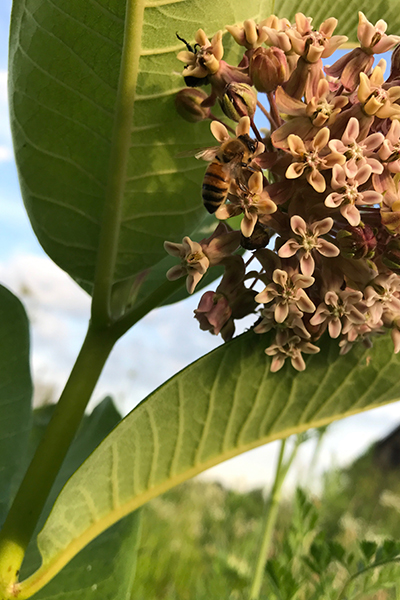The milkweed is blooming, the milkweed is blooming!
Why all of the excitement? Common milkweed is a favorite plant for more than 450 species of aphids, bees, wasps, beetles, butterflies, moths and more. Whether these insects are using it as a nursery for their larvae to munch on once hatched or sipping nectar from the fragrant flowers, milkweed is a very popular plant.
Milkweed grows in clusters in fields, meadows, prairies and gardens. They have a thick stem that supports the plant, enabling it to grow up to five feet high. The plant’s name comes from the sticky white sap that seeps from the stems and leaves when broken. The sap contains various compounds that render the plant toxic to most insects and animals. However, some insects are able to turn these compounds into a defense. The insects will store the milkweed sap’s compounds in their bodies, which makes them inedible, or even toxic, to birds and other animals that try to eat them. Insects that feed on these compounds often have color patterns that warn of their toxicity. Monarch, milkweed bugs and milkweed beetles are just a few of the insects that use coloration to warn away potential predators.
Common milkweed is easy to grow from seed. Once established, it will also spread with deep rhizomes – so you need to make sure that it is in a place where you are okay with it spreading! It is a great plant to have, though, because it provides a food source for amazing insects like the monarch butterfly, whose larvae feed almost exclusively on milkweed. If you are looking for something to really stand out in your garden and create a mini-universe all its own, then take a closer look at the common milkweed!
Amy Roell, Outdoor Education Director






